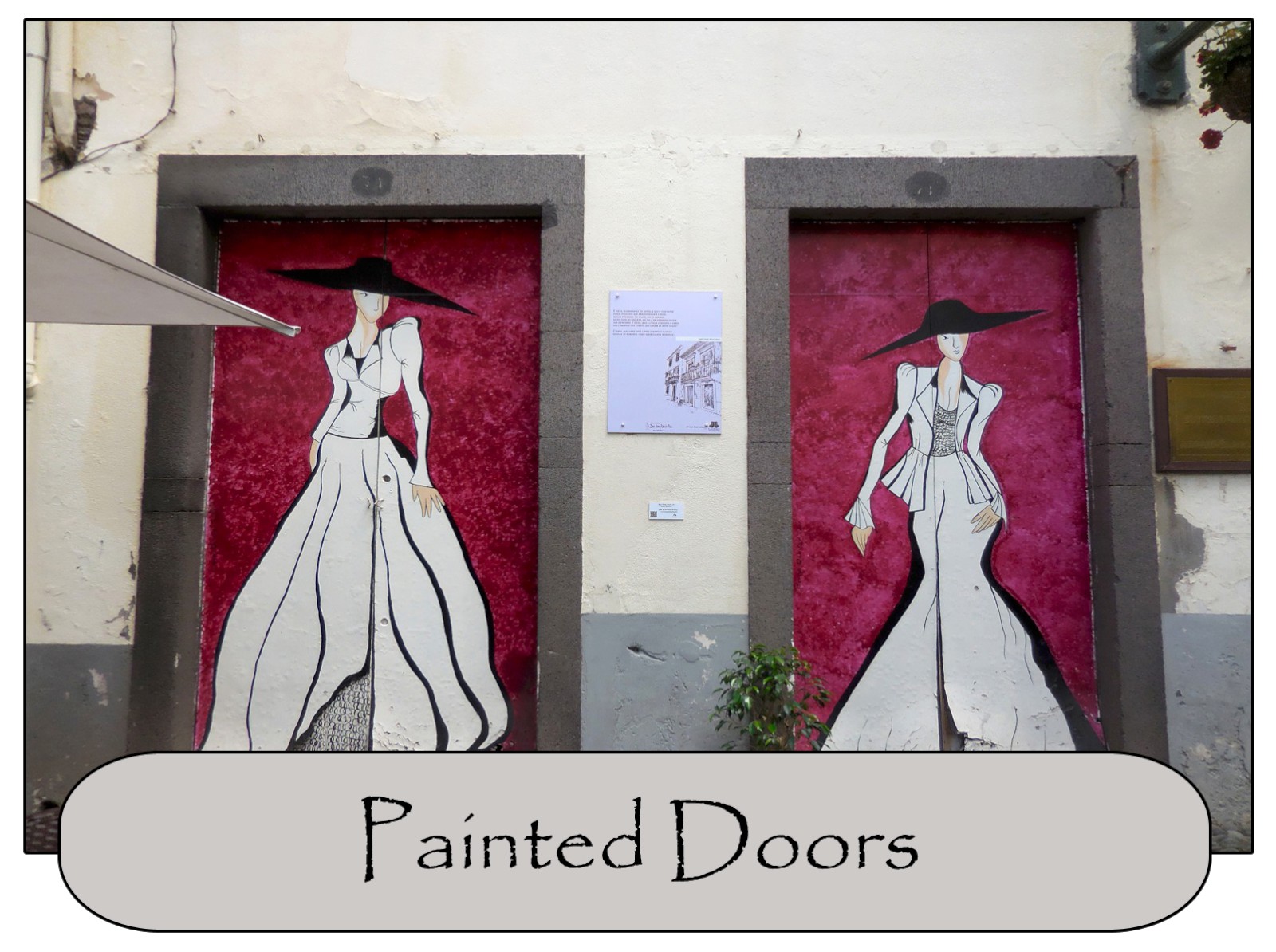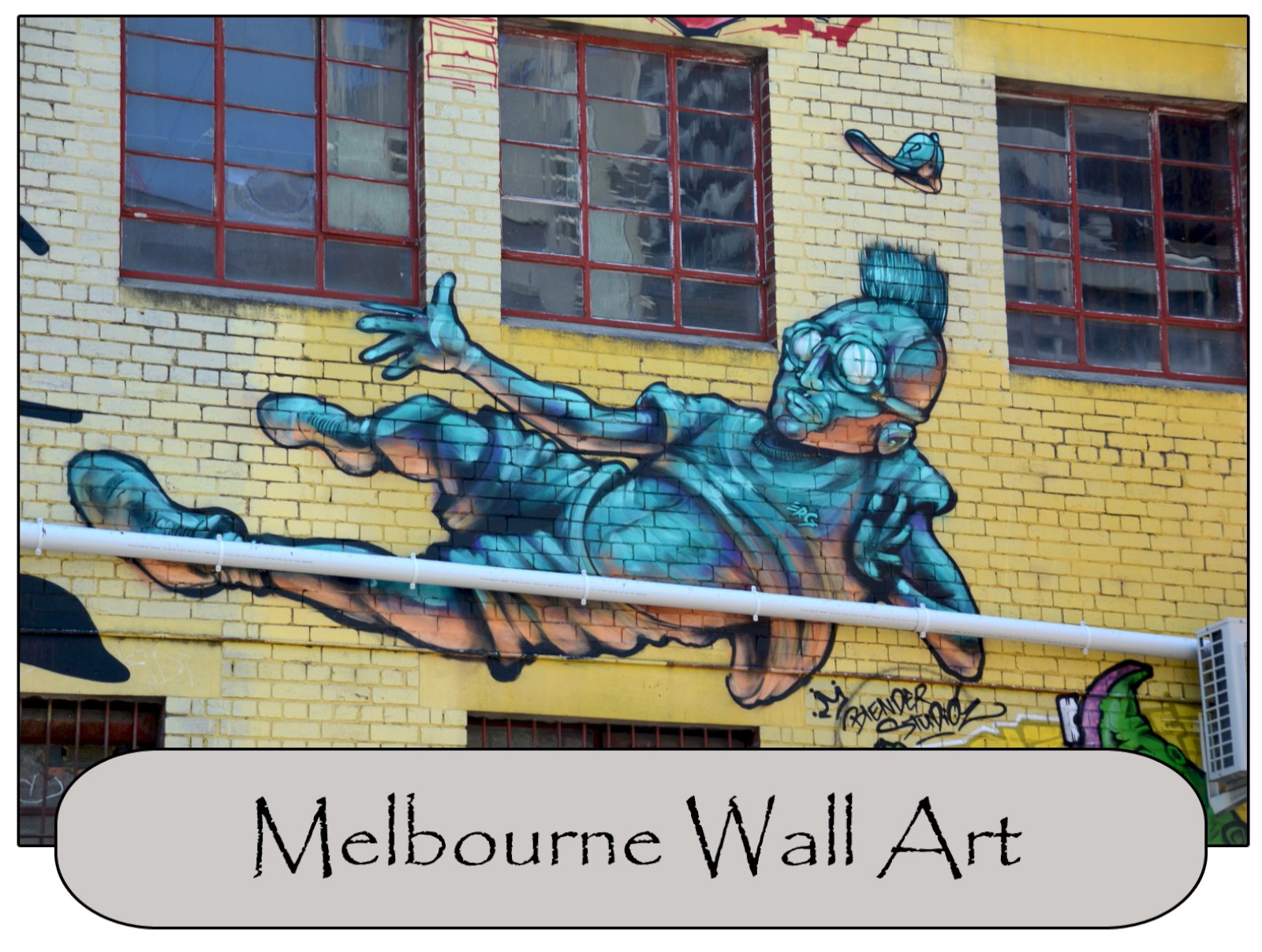Hanoi ceramic mosaic mural is built on the walls of the Red River dike system that protects the Red River from flooding Hanoi, Vietnam. The project began in 2007 and was completed on October 5, 2010 and was one of the major projects that was developed to celebrate the Millennial Anniversary (1000 years) of the city of Hanoi.
The length of the mural is about 3.85 Kilometers (2.4 miles) making it the world’s largest ceramic mosaic and was awarded a Guinness World Records certificate. The project involved 35 professional artist from Vietnam and 10 other countries. Additionally, the project included over 100 artisans from traditional ceramic villages in Vietnam and 500 support personnel.
The mosaic scenes seem to have 4 different themes: Famous places in Vietnam, Vietnam culture and symbols, nature and wildlife and top world attractions.
The famous placed in Vietnam that I noticed in the wall mural are the one pillar pagoda, Huc Bridge at Haon Kiem Lake in Hanoi, the Temple of Literature and Ben Thanh Market in Ho Chi Minh City.
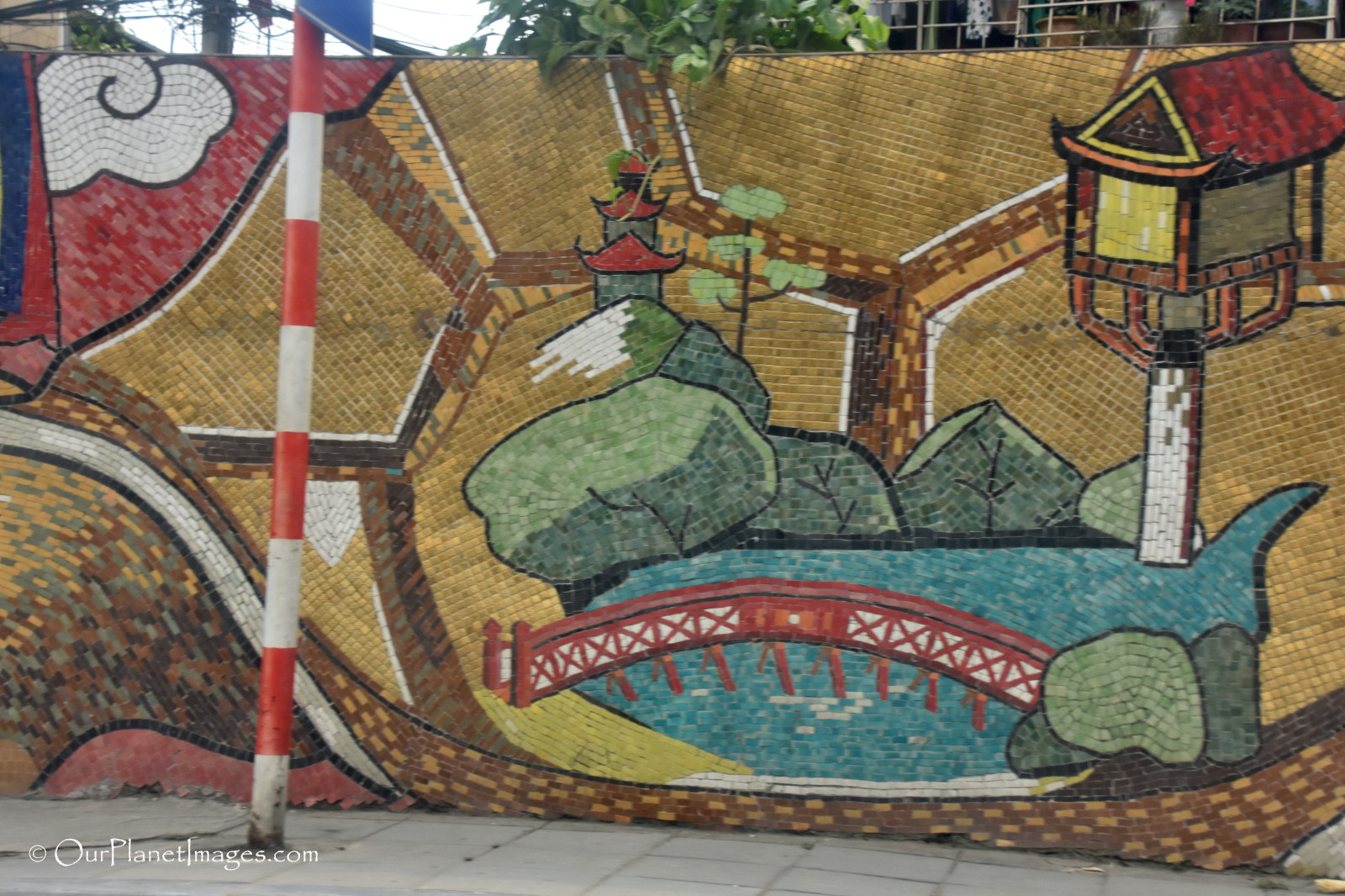

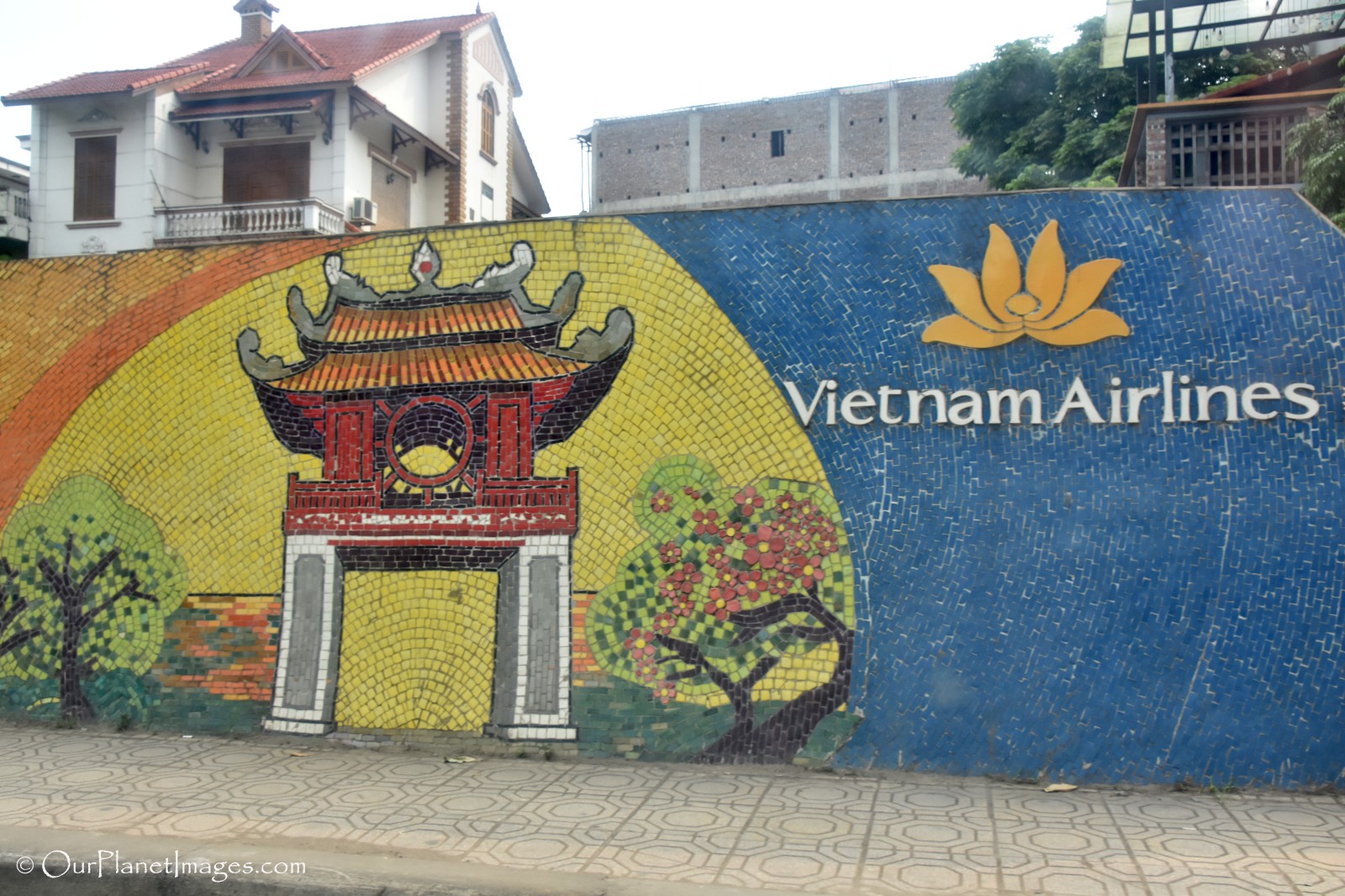
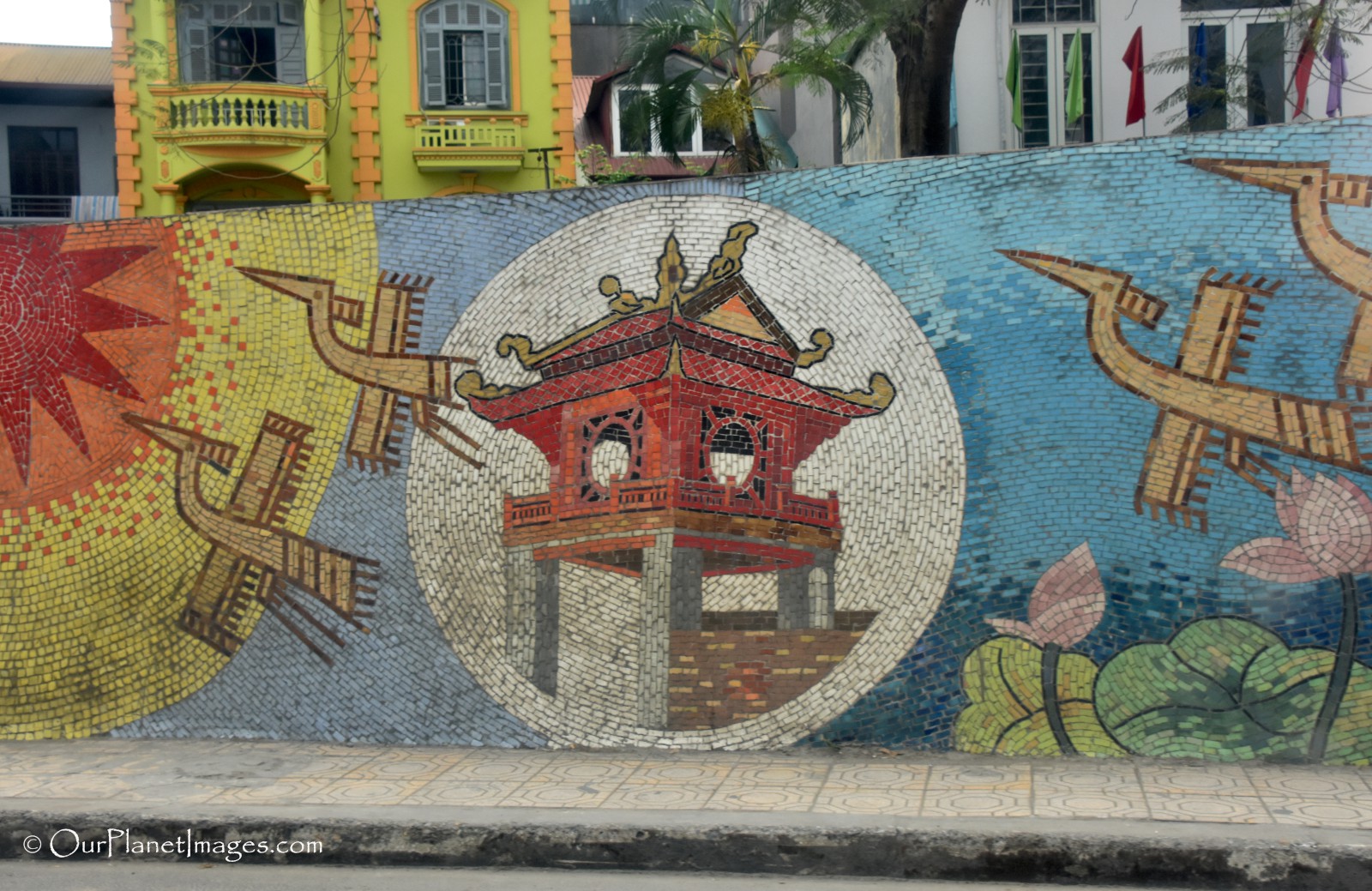
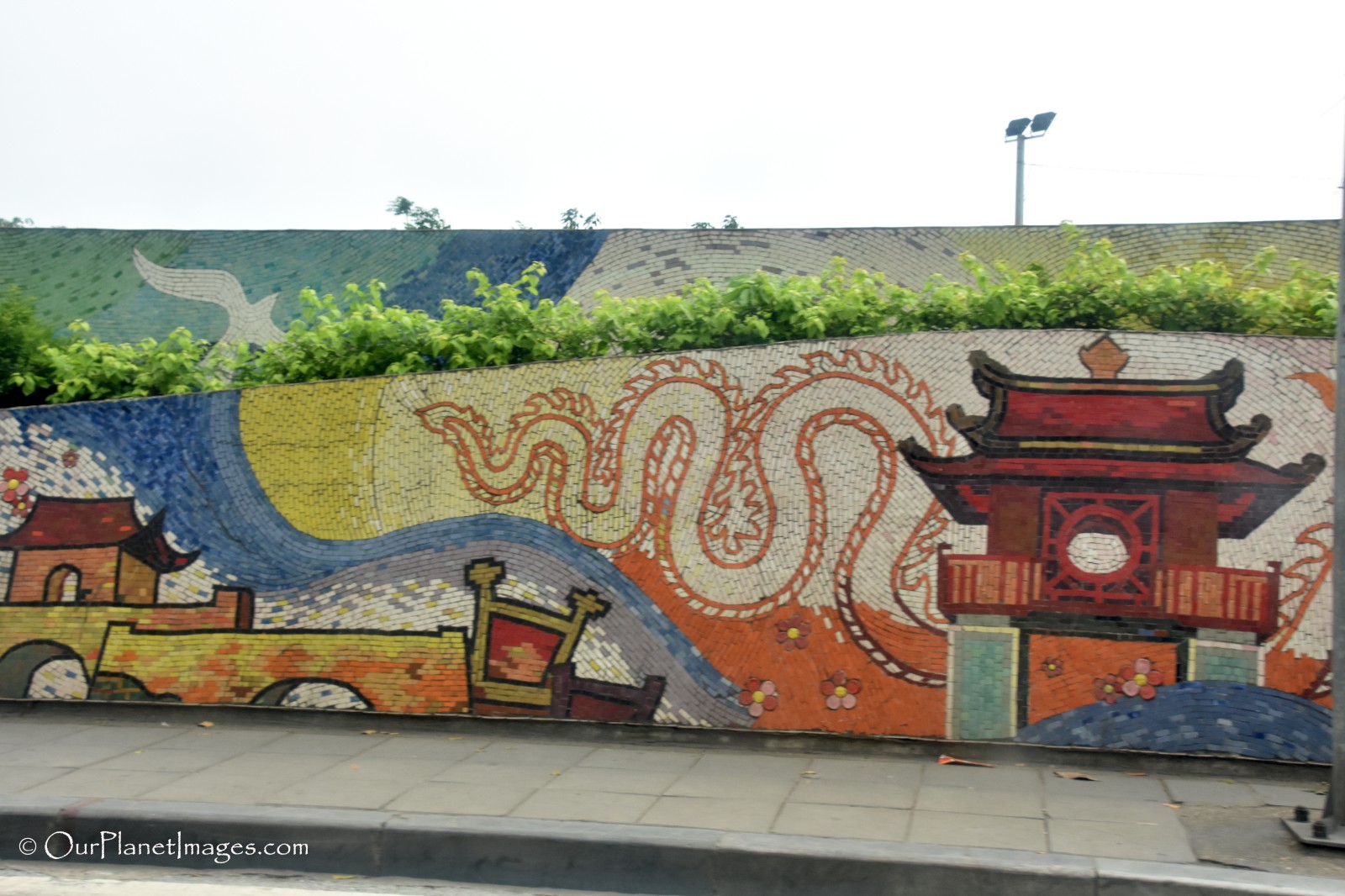
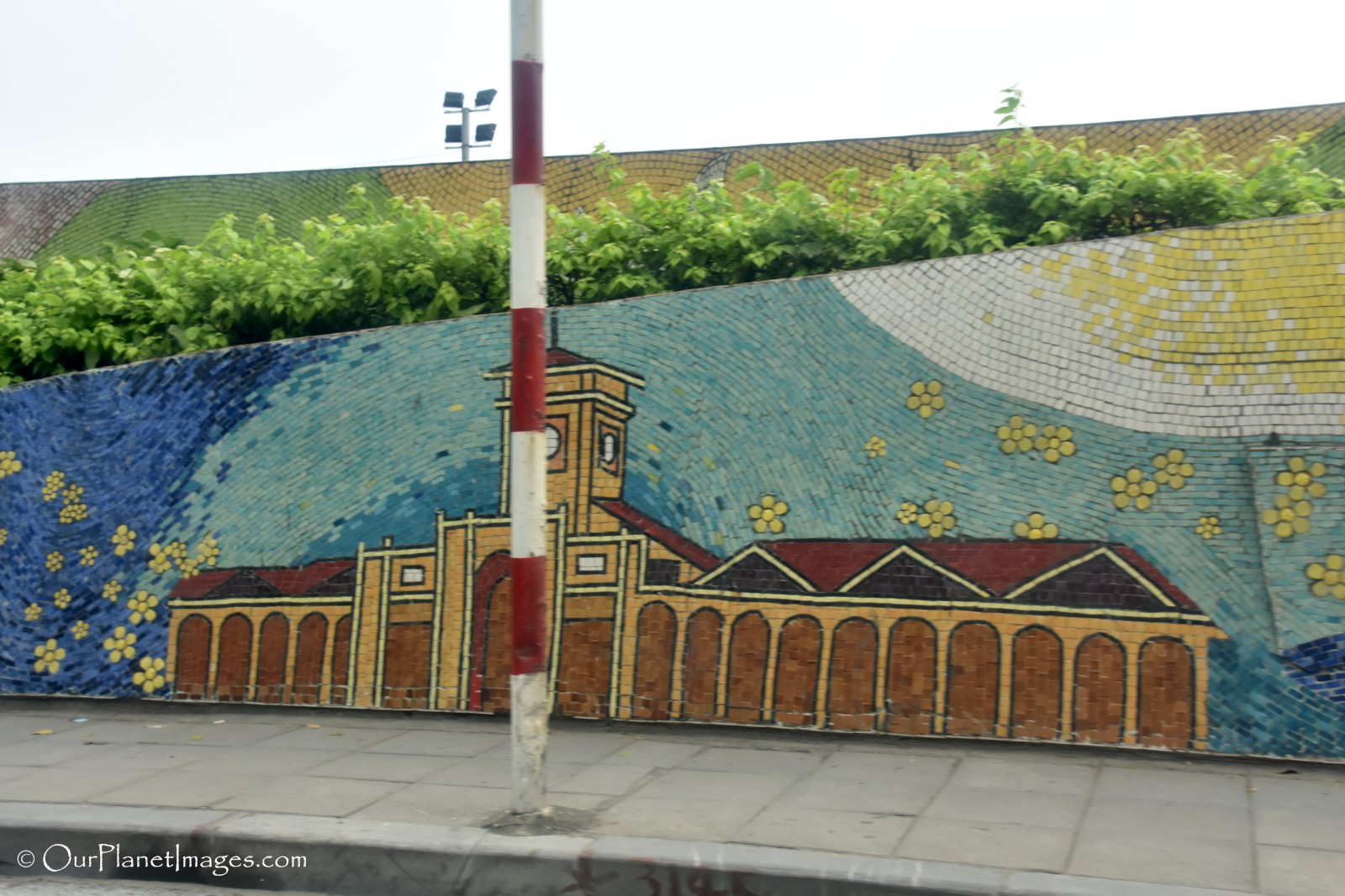
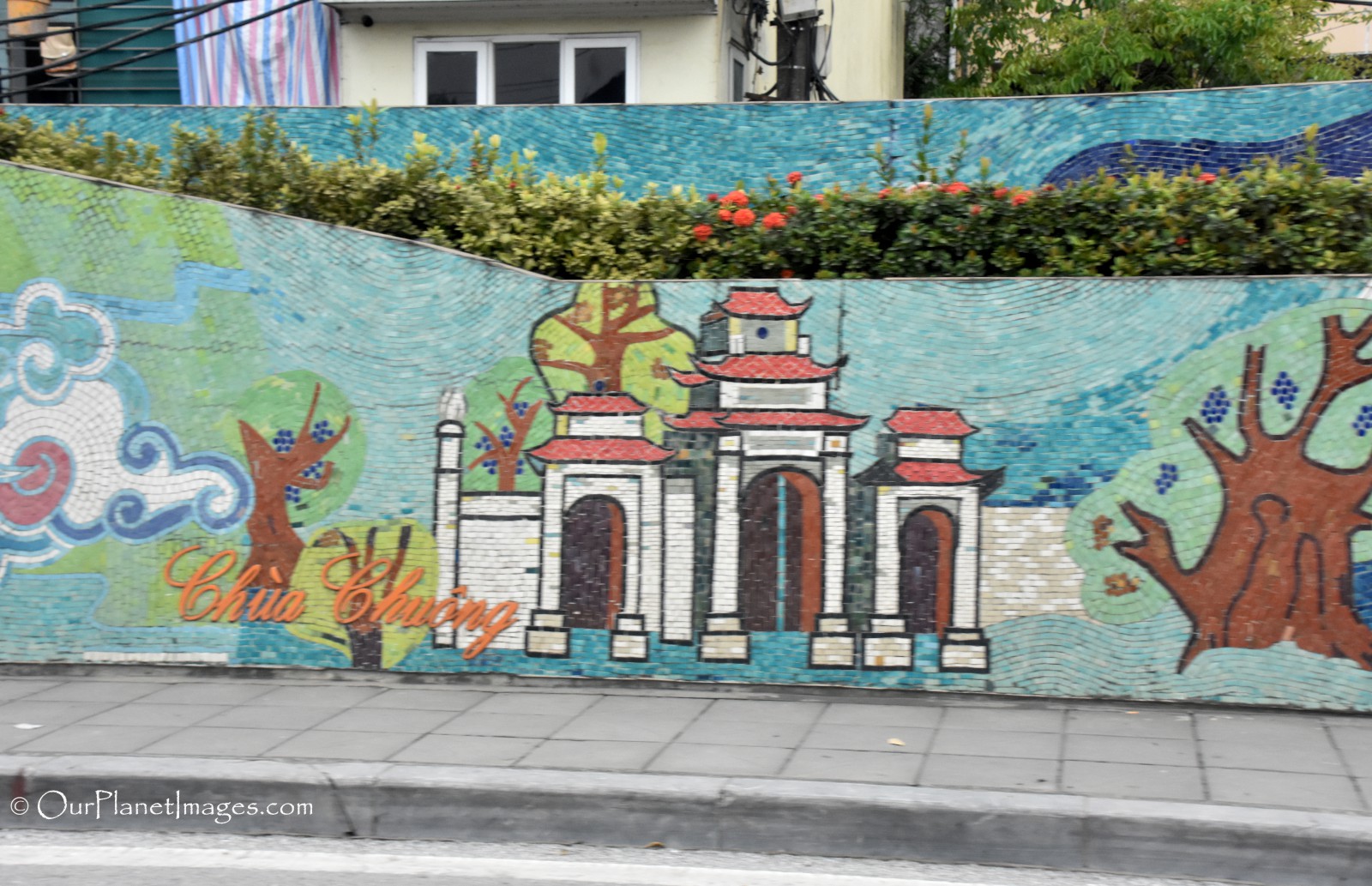
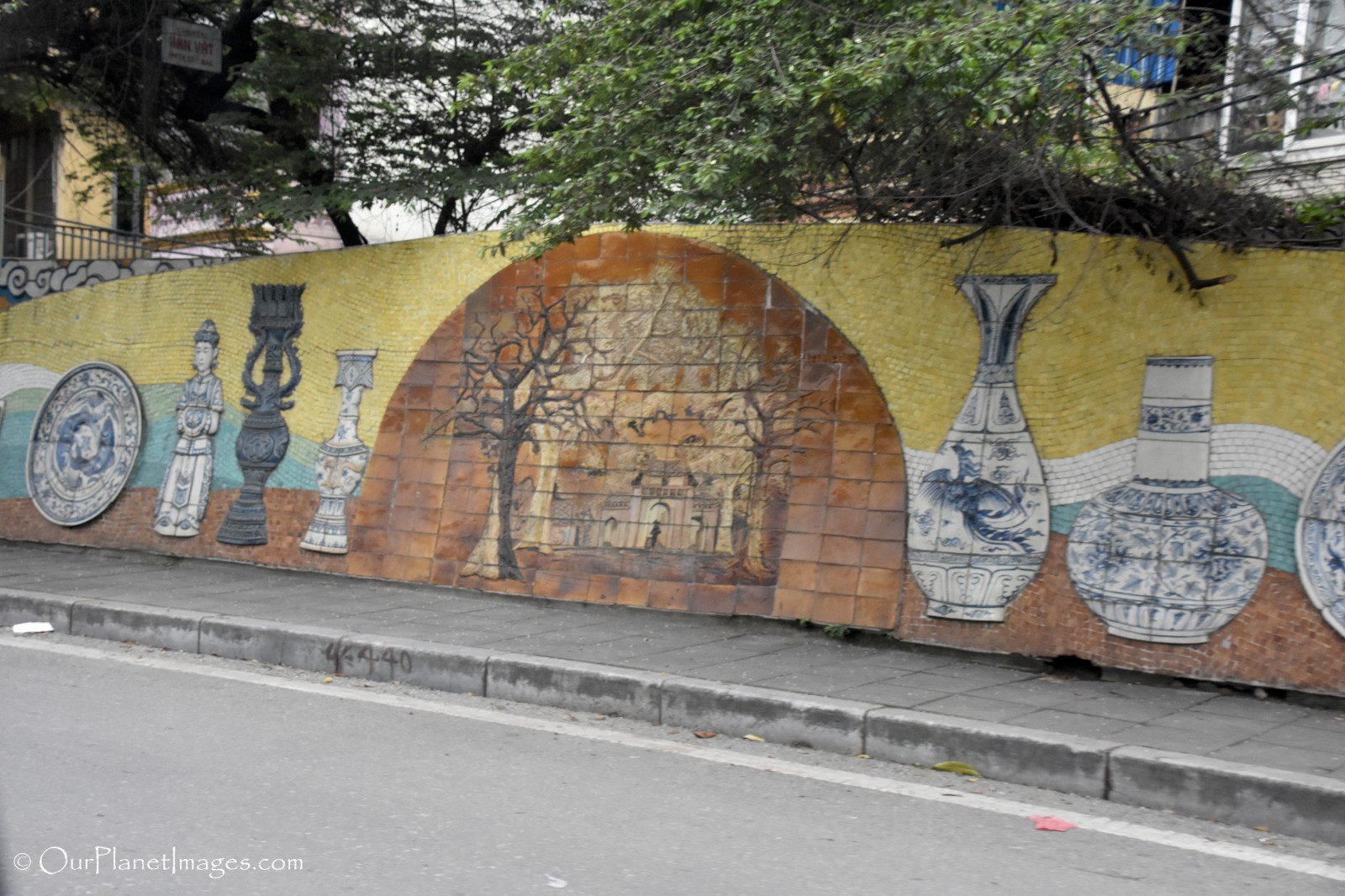
The murals that represented Vietnam’s culture and symbols include the legend of the turtle and the sword, traditional rural scenes, iconic historical scenes, dragon images and Cham figures.


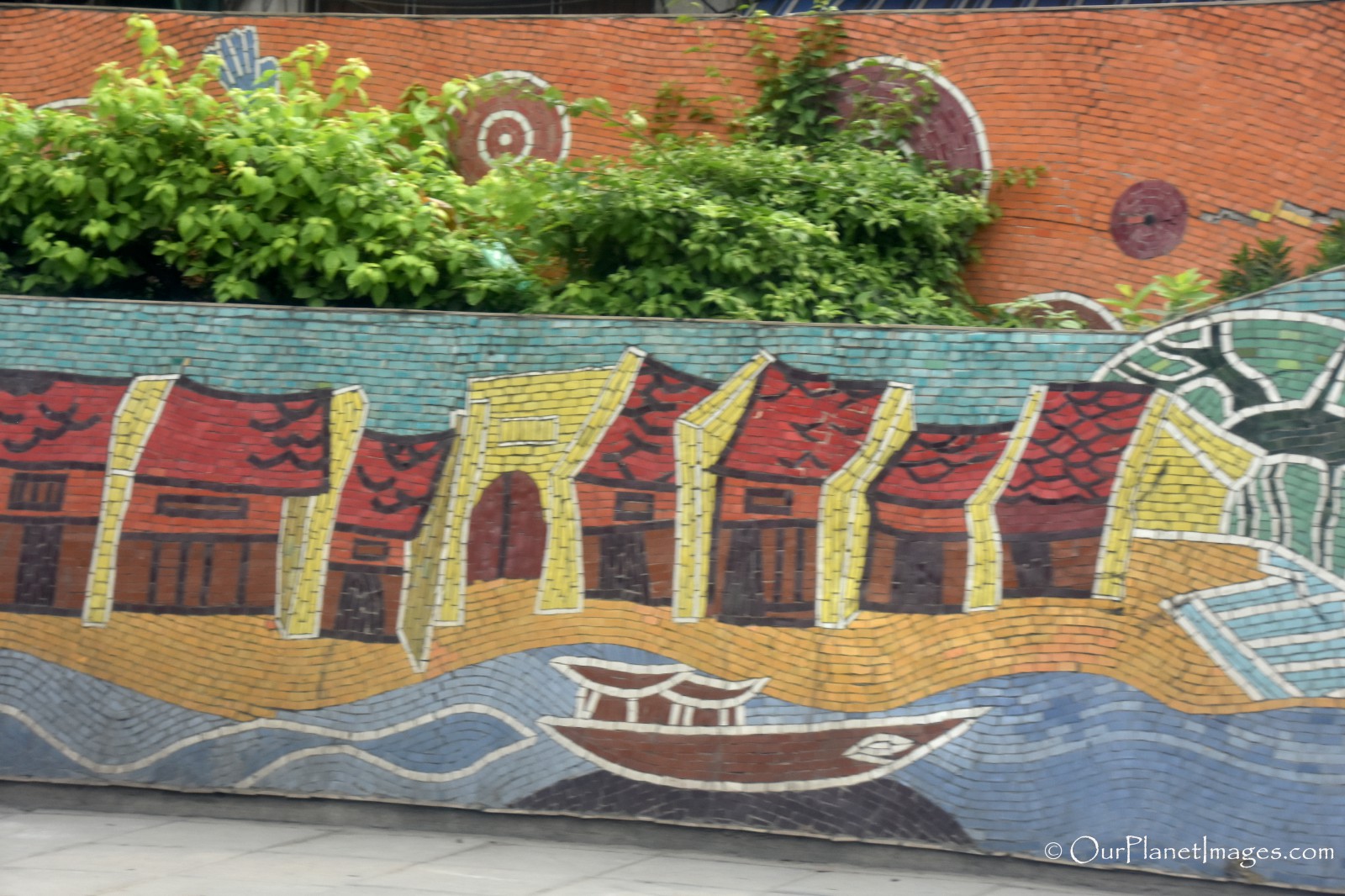
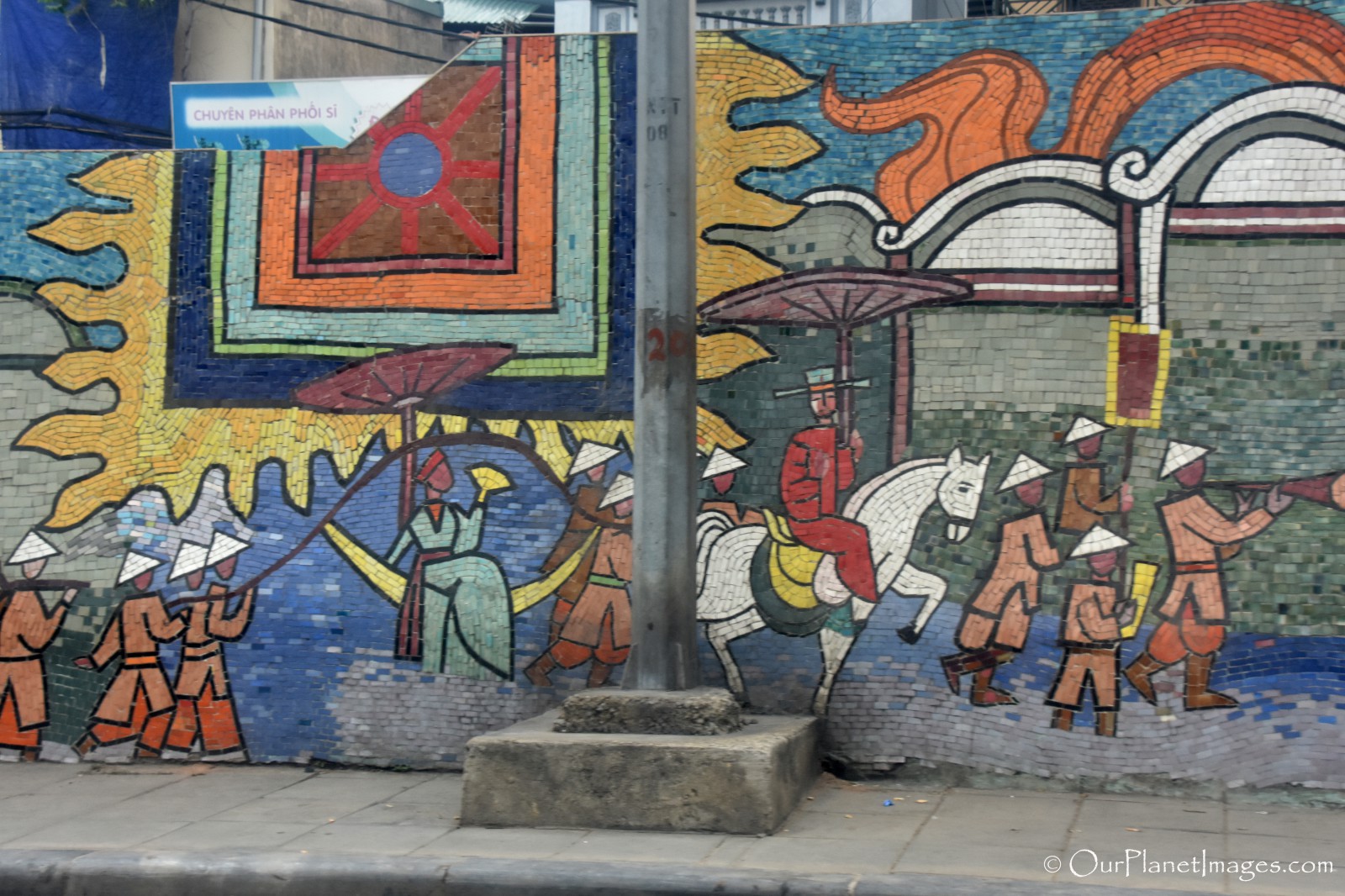

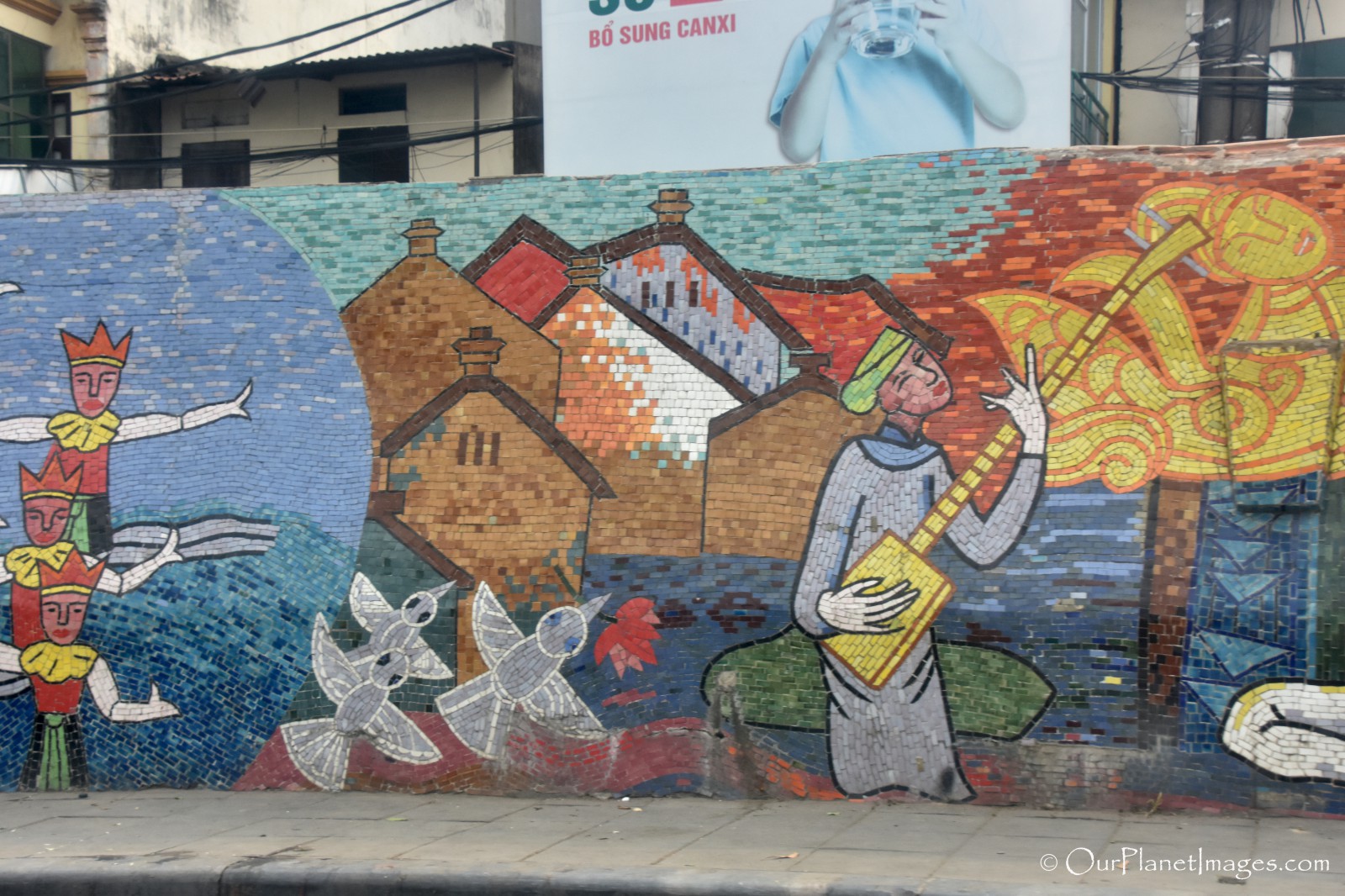
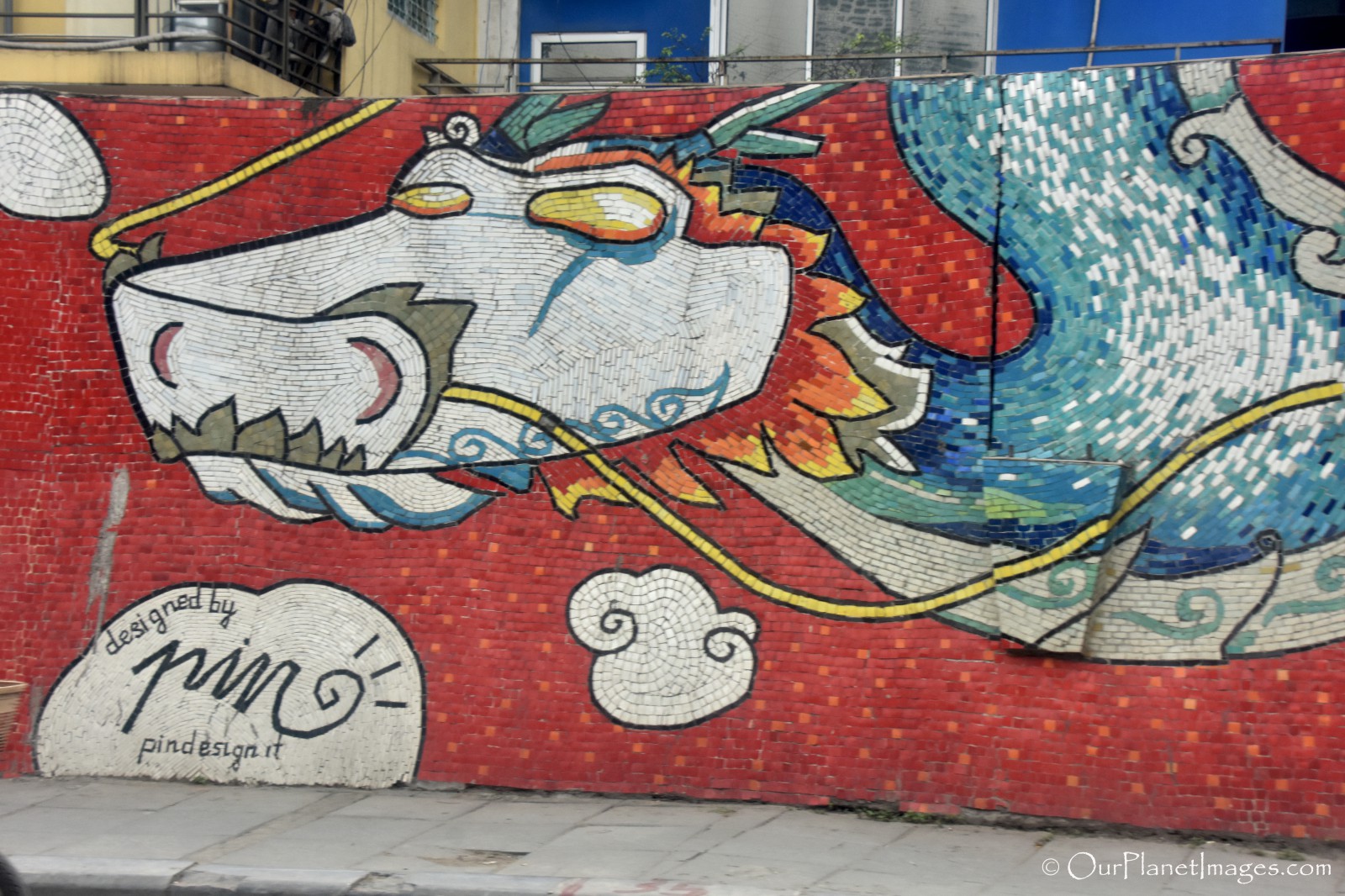
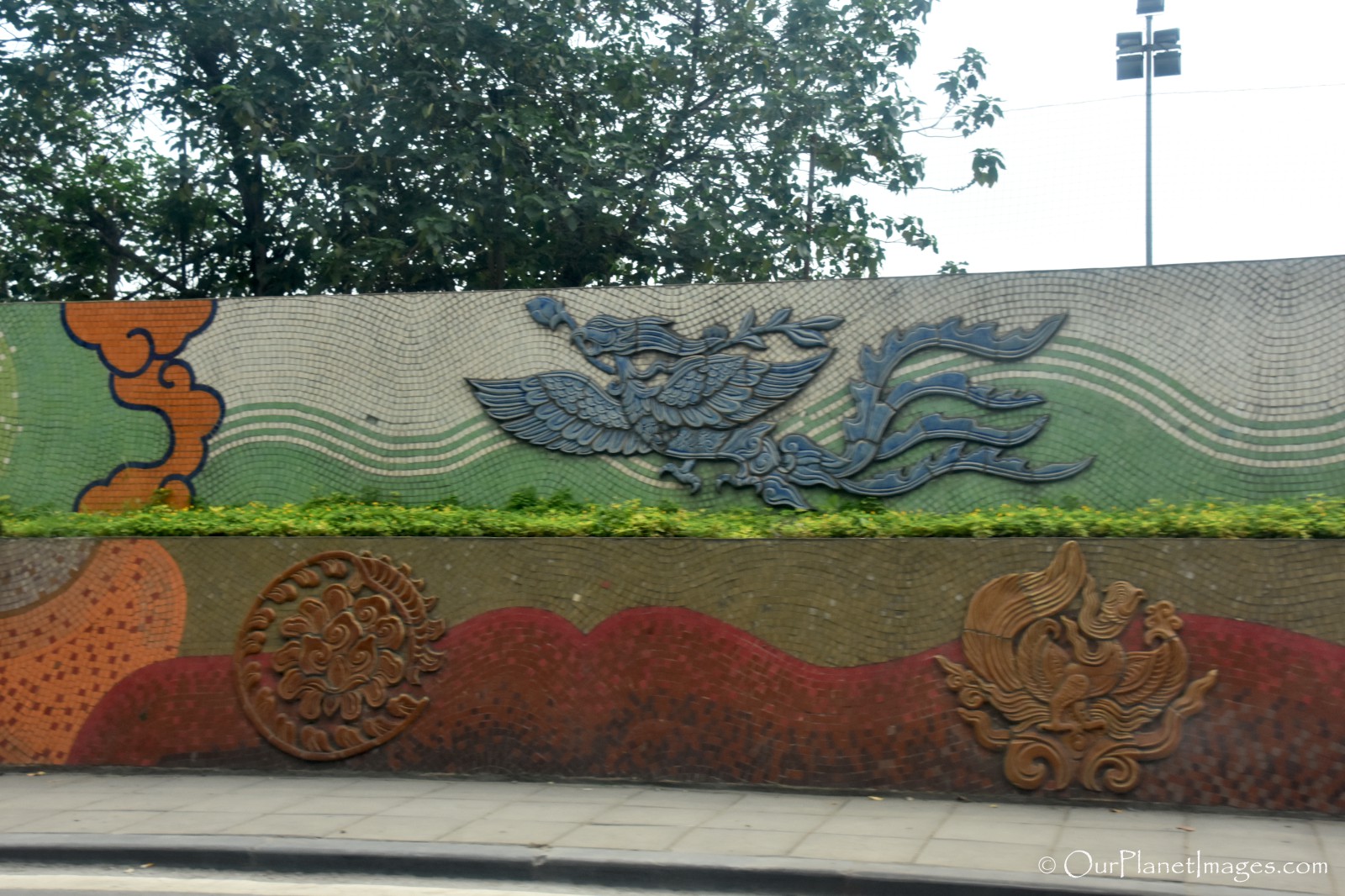
The murals that represent nature and wildlife include Lotus flowers, bamboo, storks, elephants, turtles and fish.
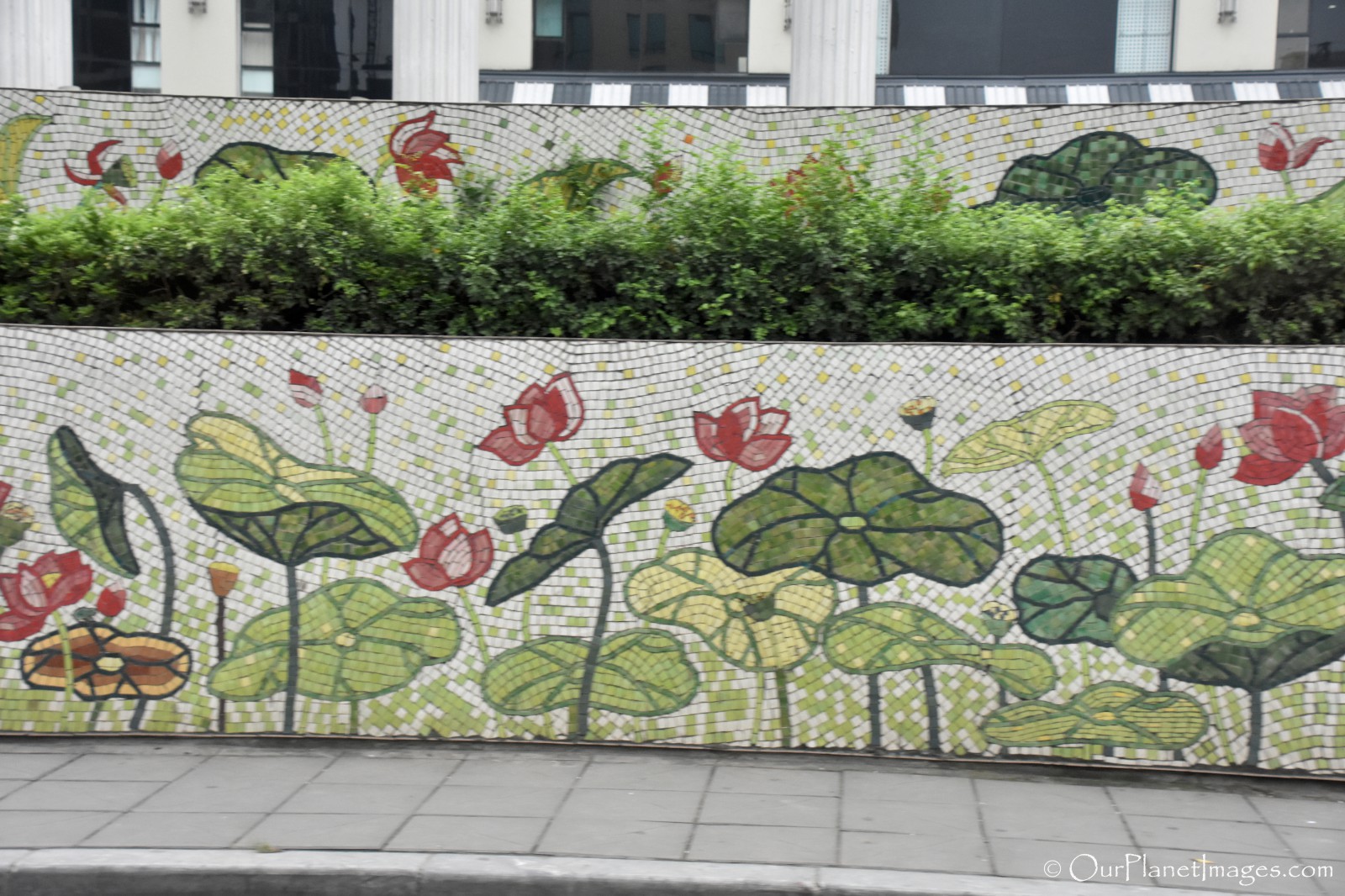
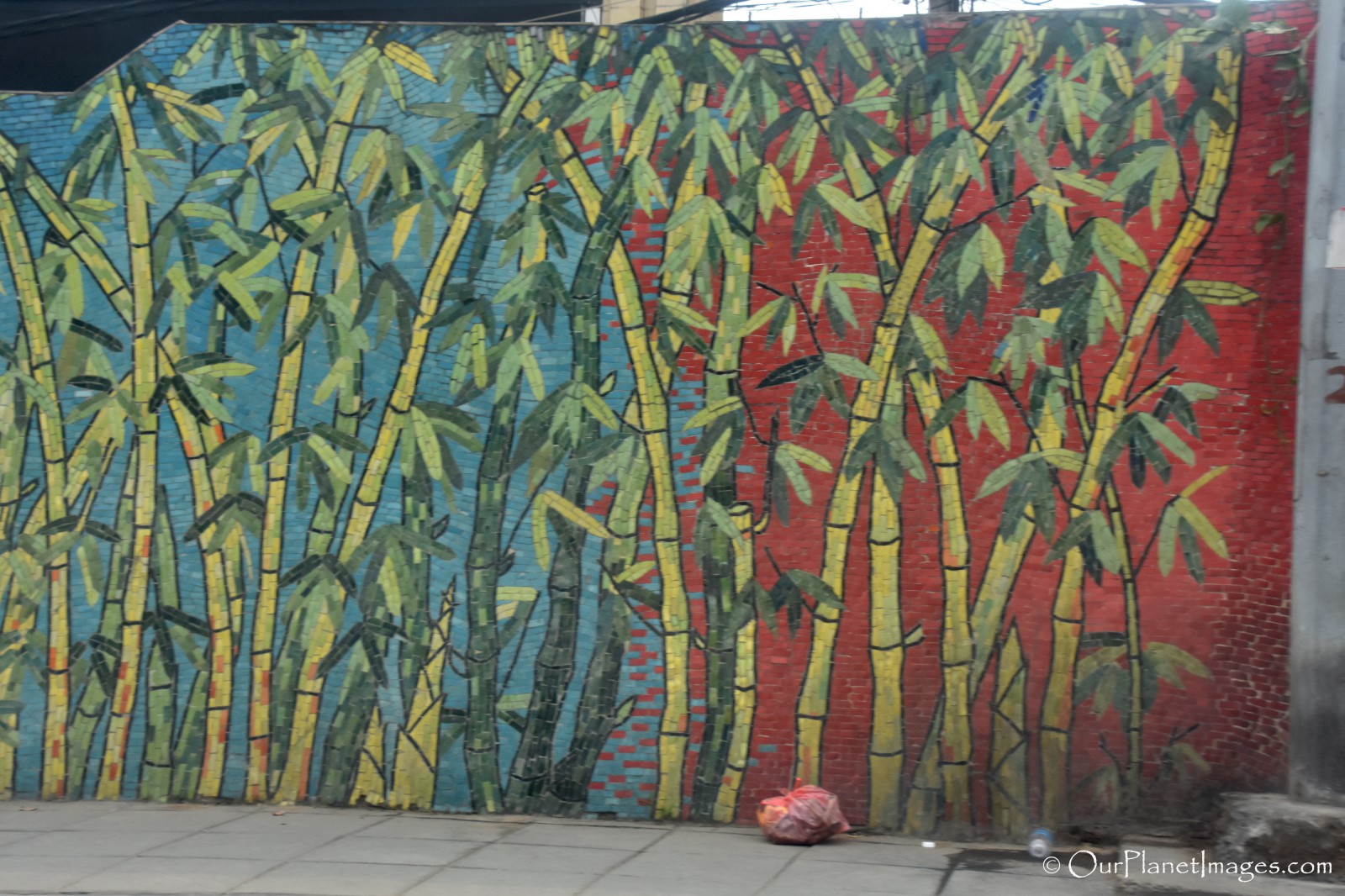
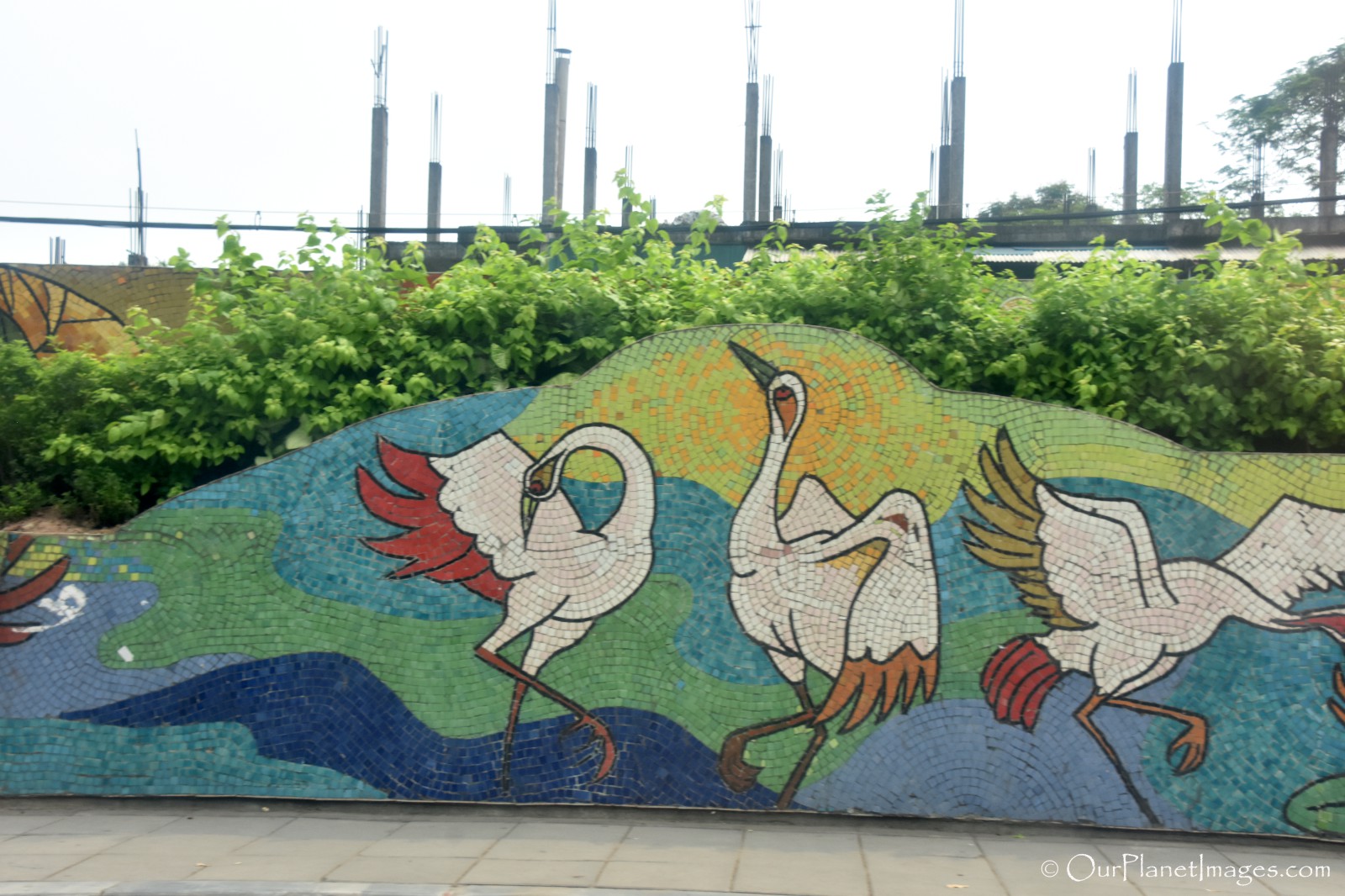
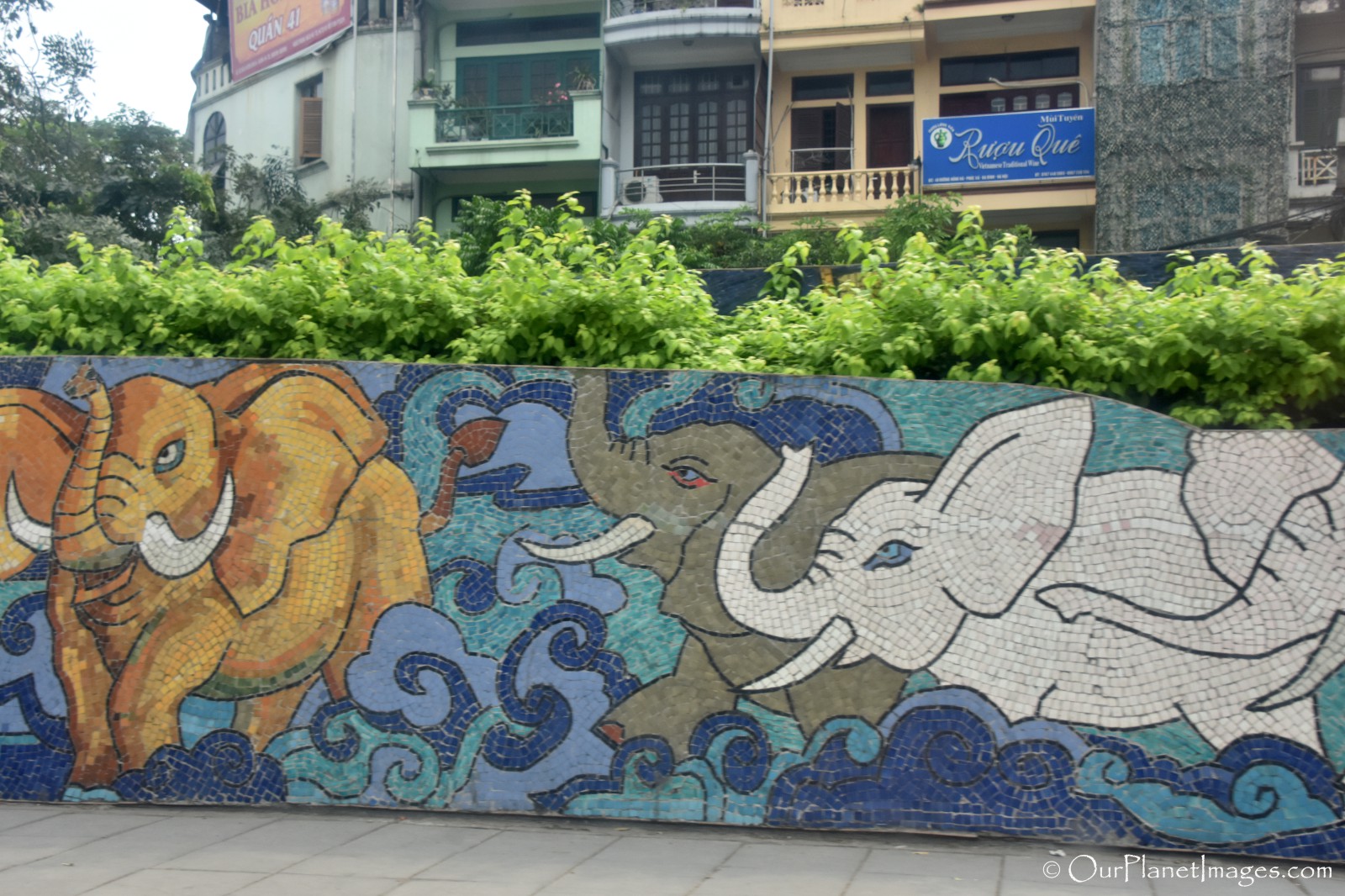
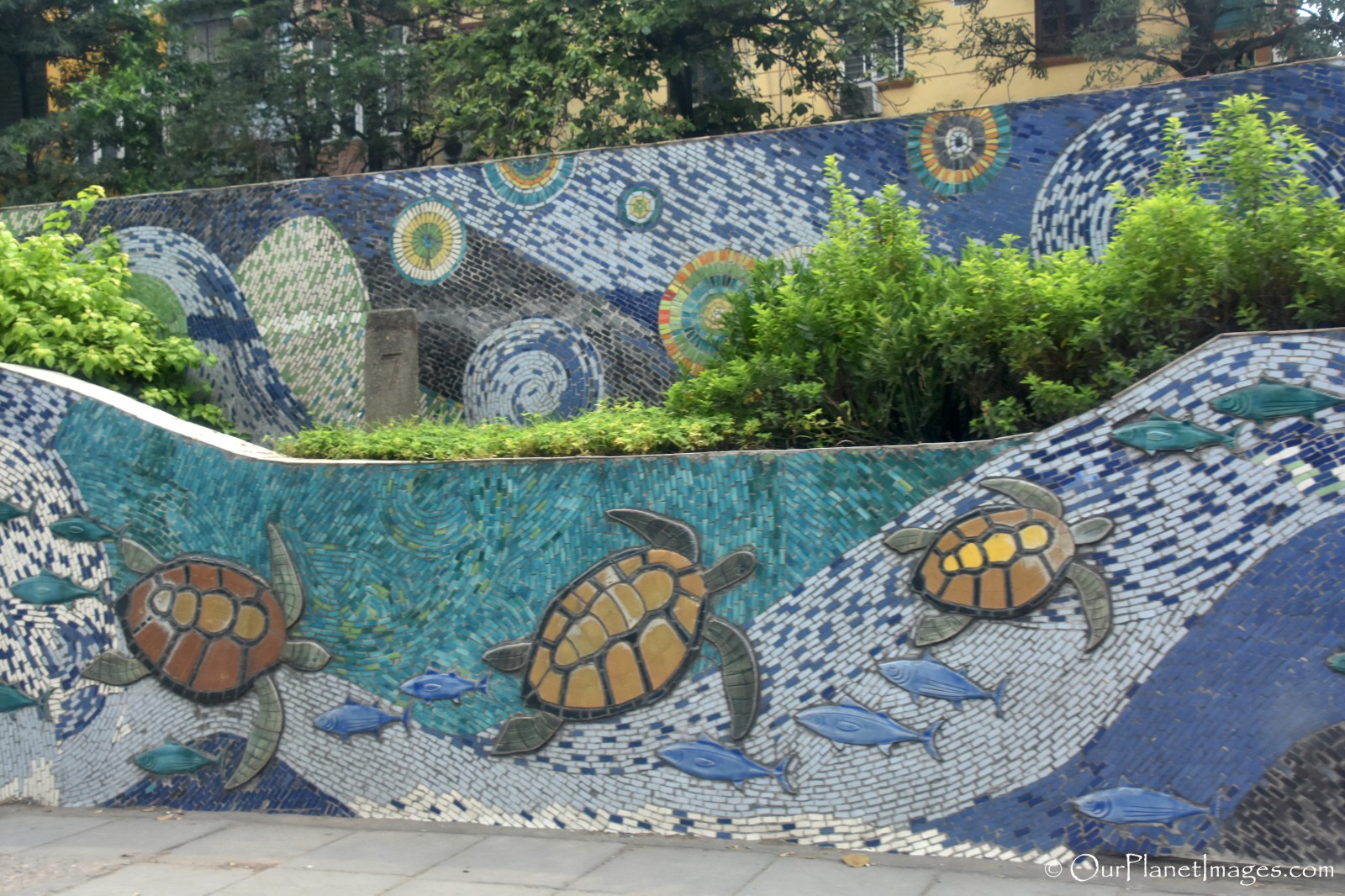
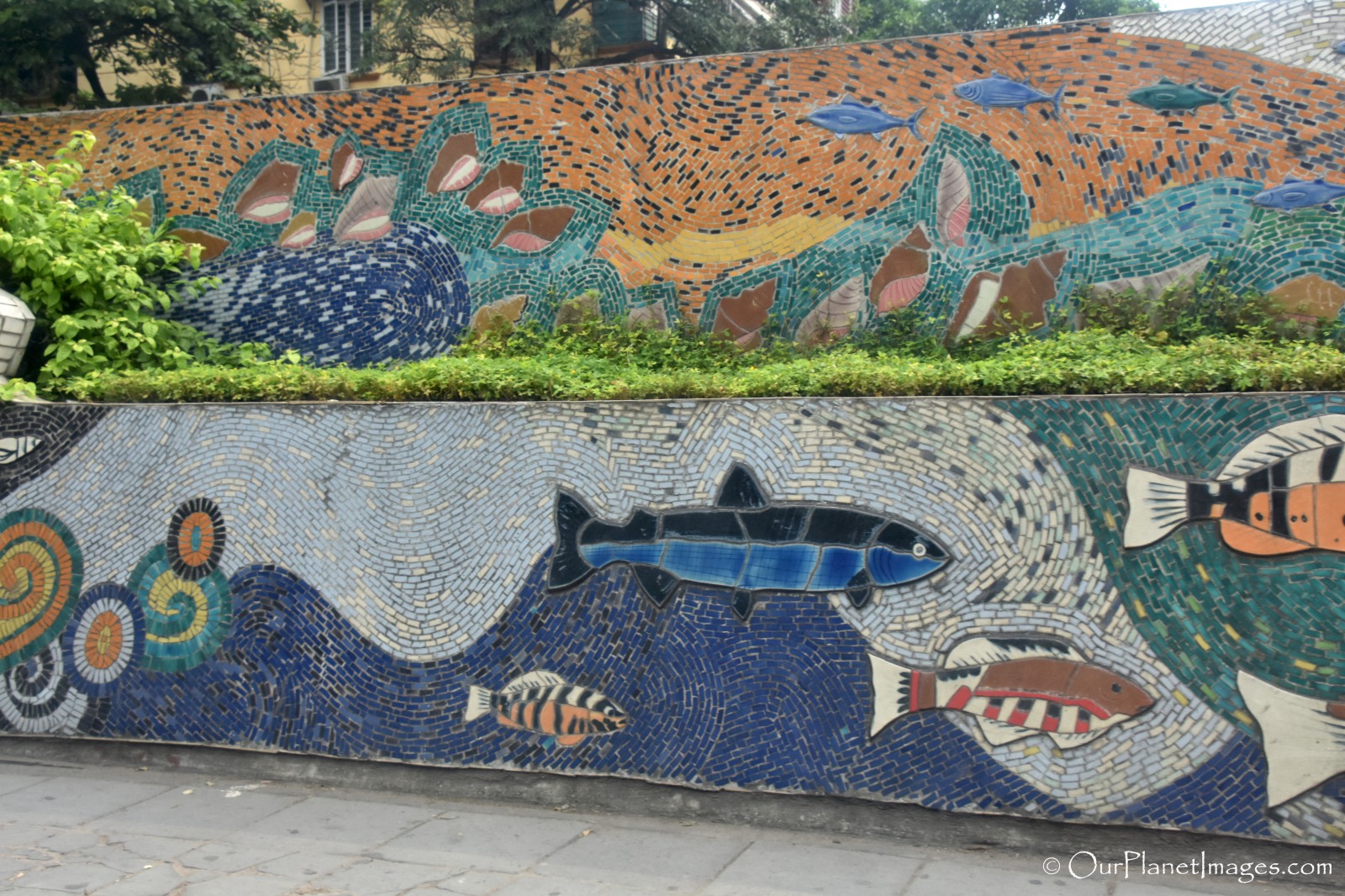
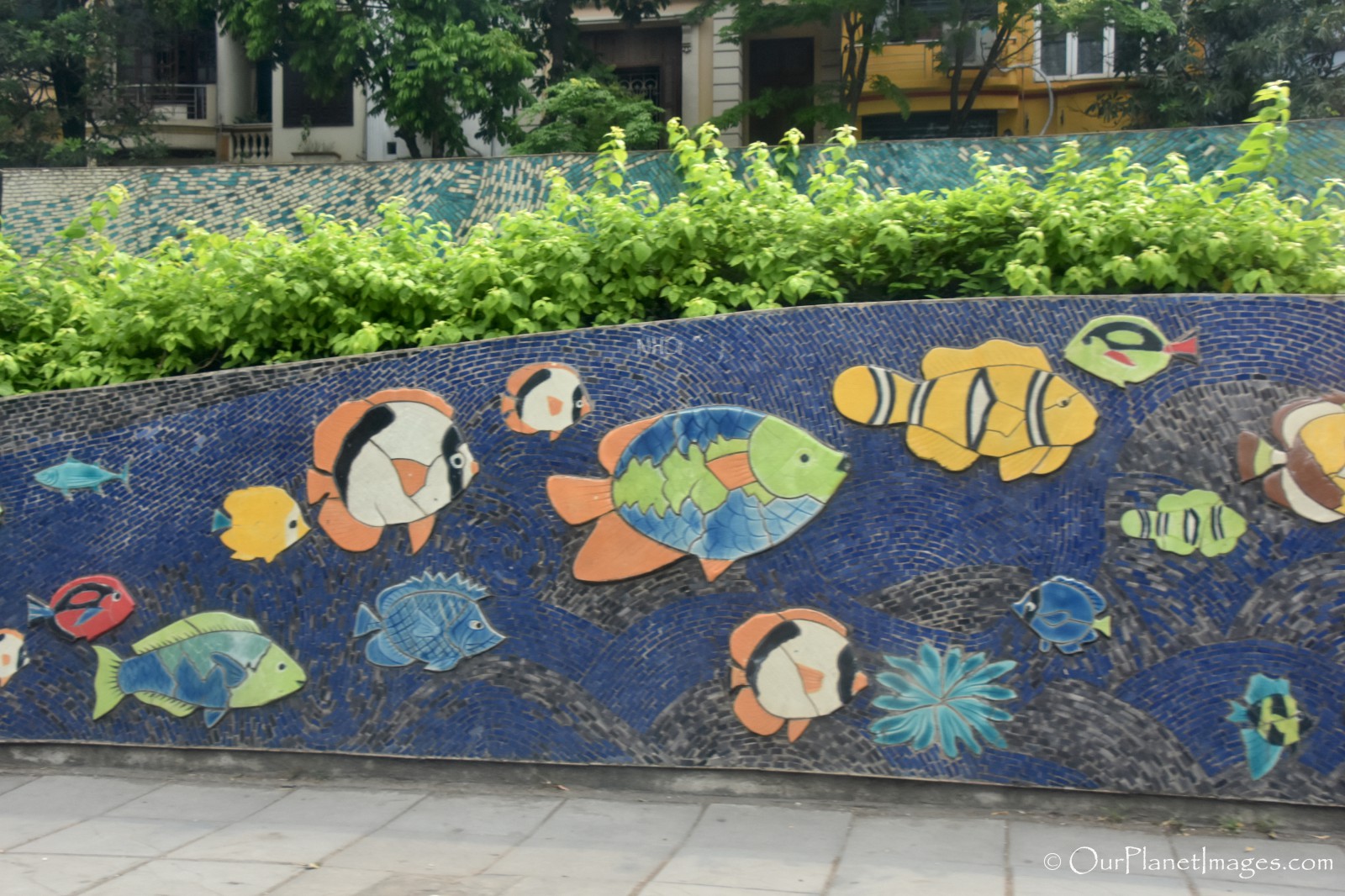
The murals that that I noticed which were images of top world attractions included the Grand Palace in Thailand, Shwedangon Pagoda in Myanmar, Borobudur Temple in Indonesia, the Merlion in Singapore, the Taj Mahal in India, Windmills of the Netherlands, and the Golden Gate Bridge in the USA.
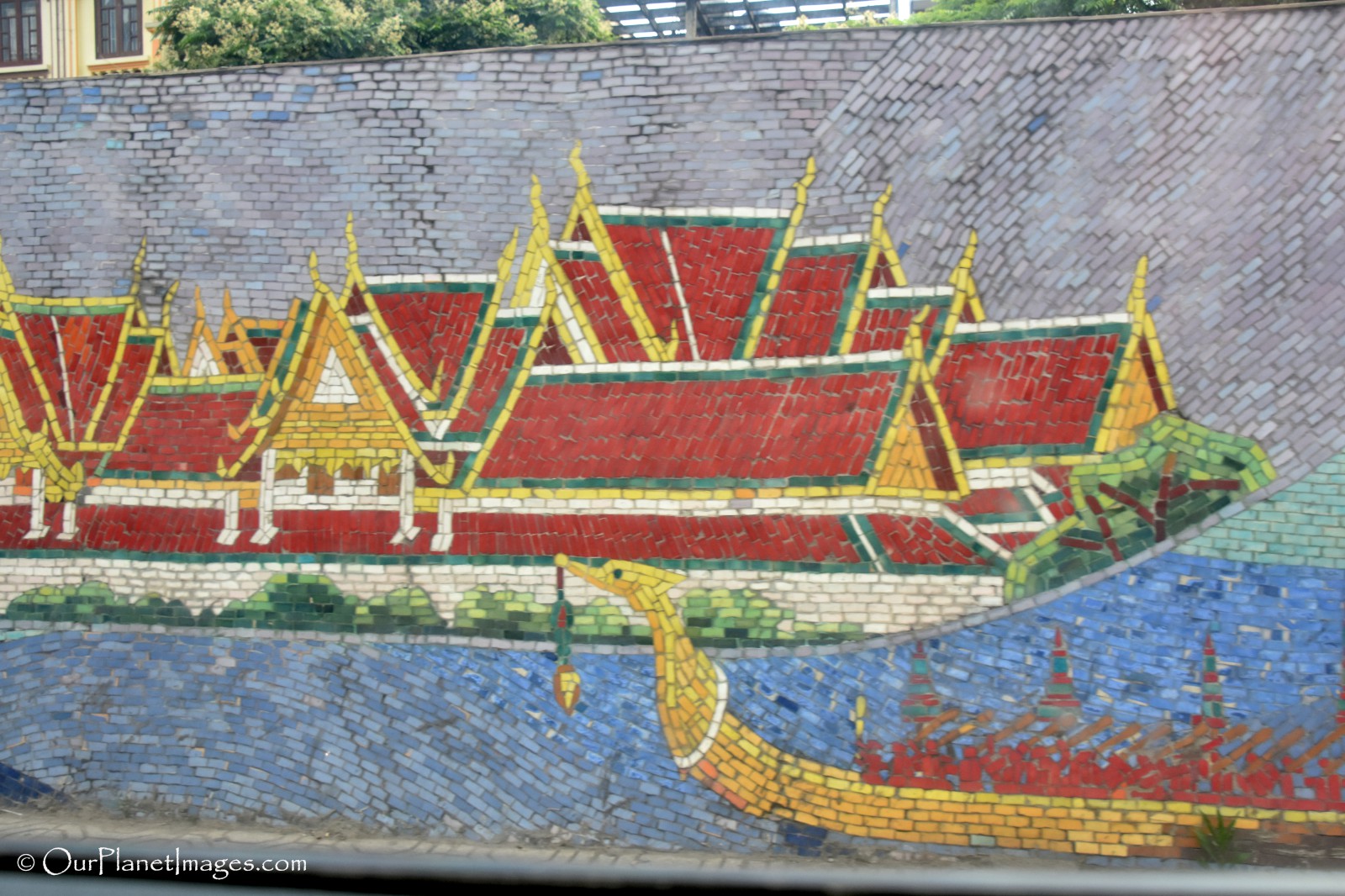
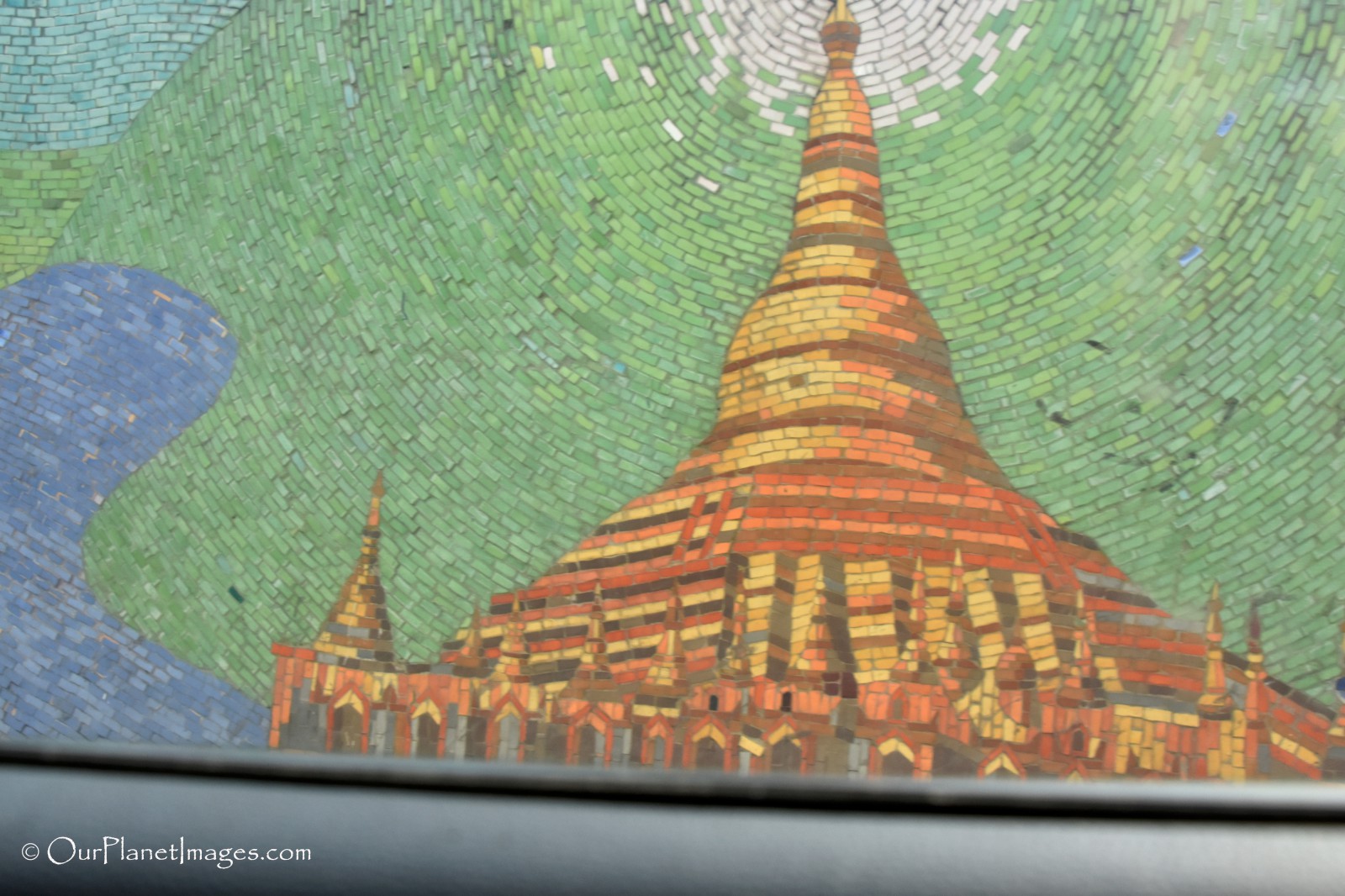
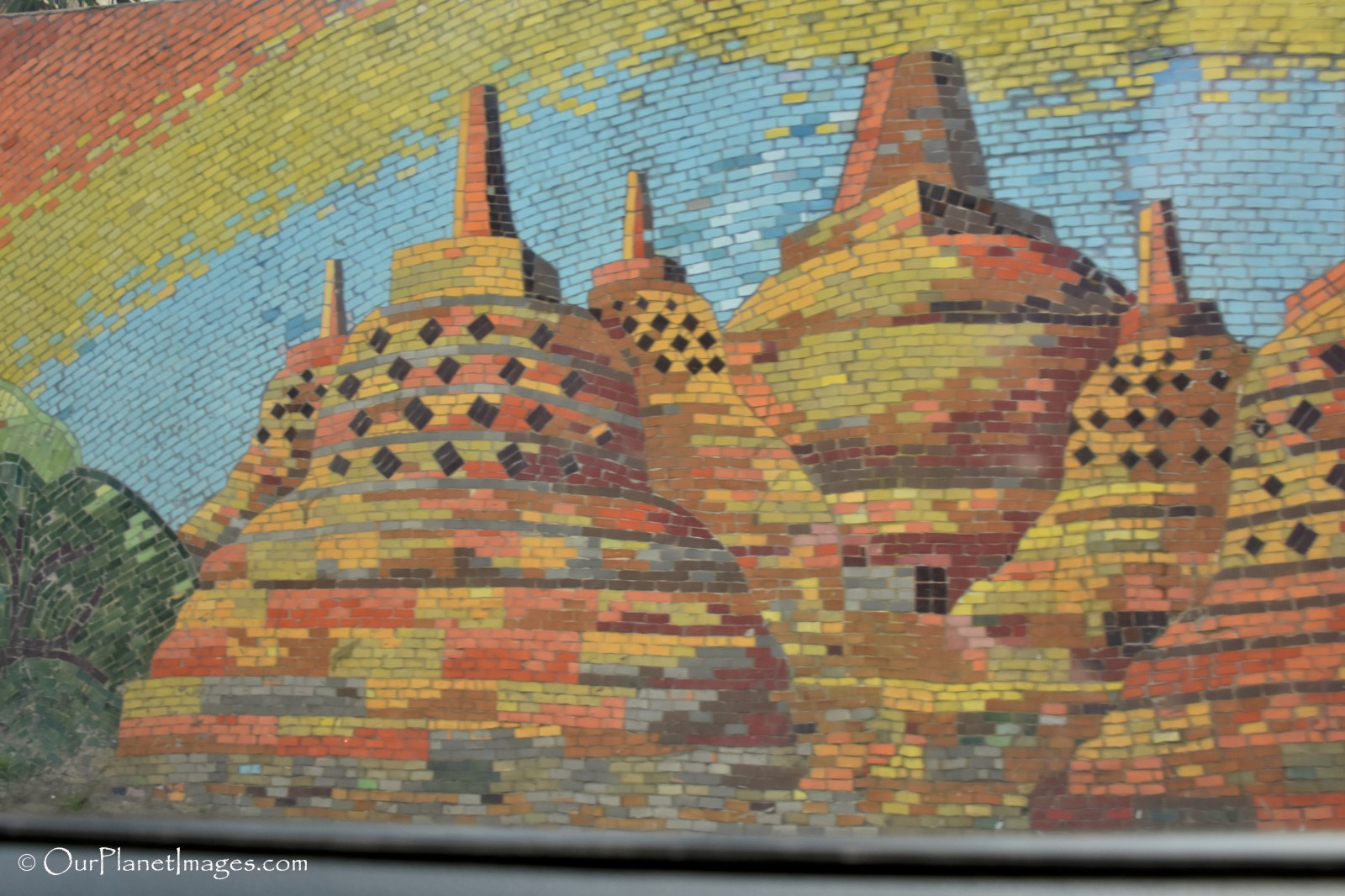
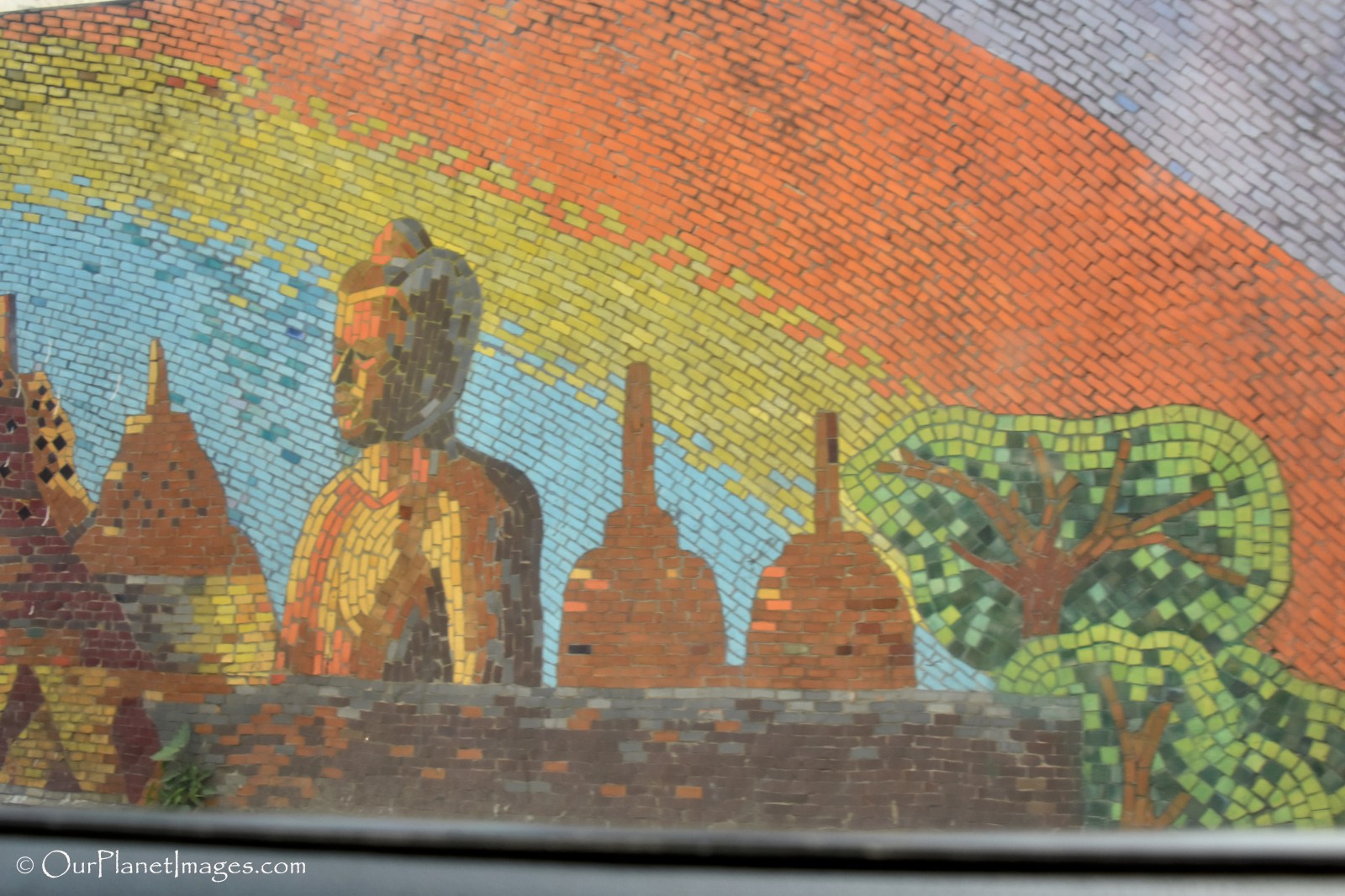
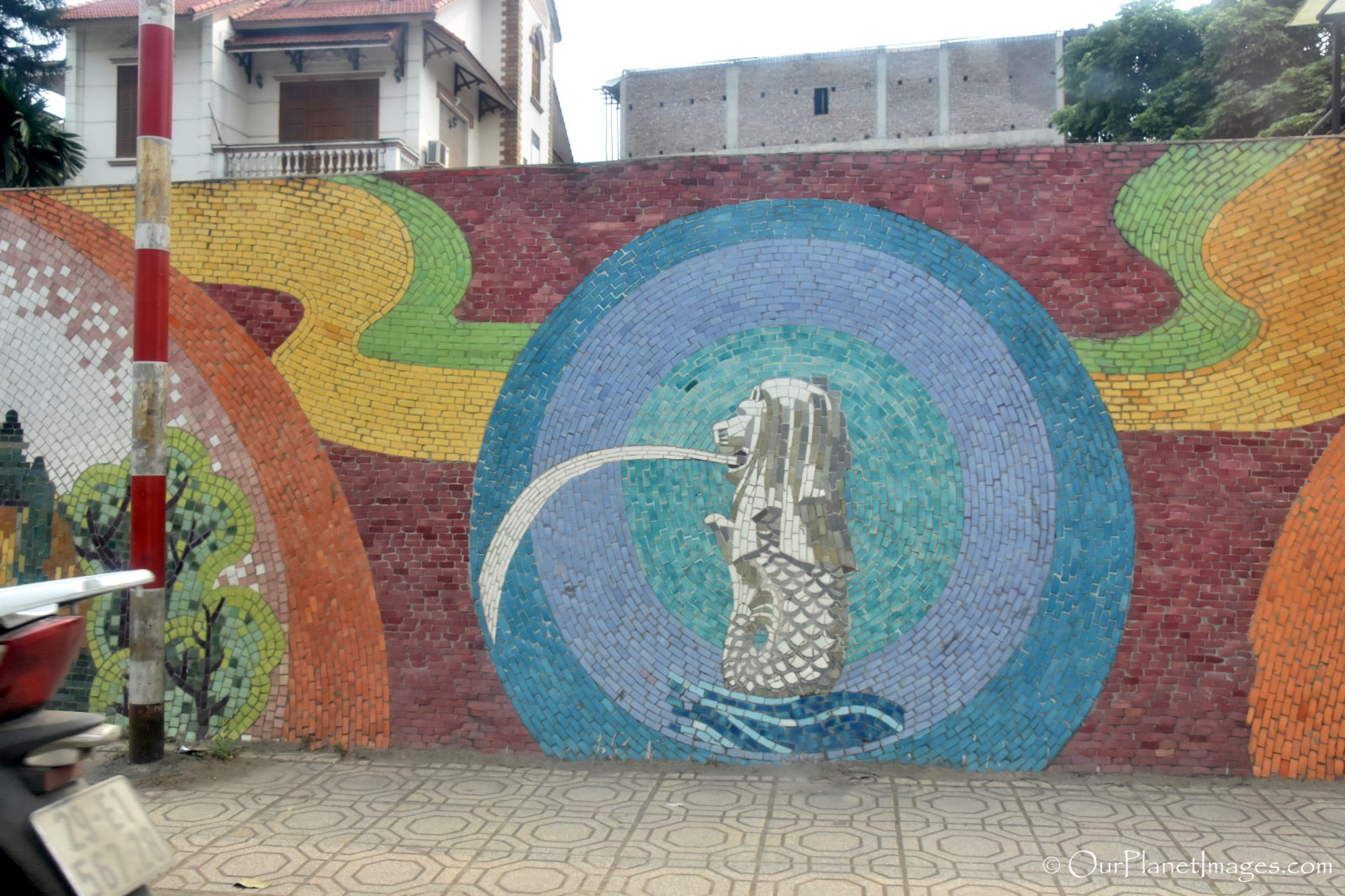
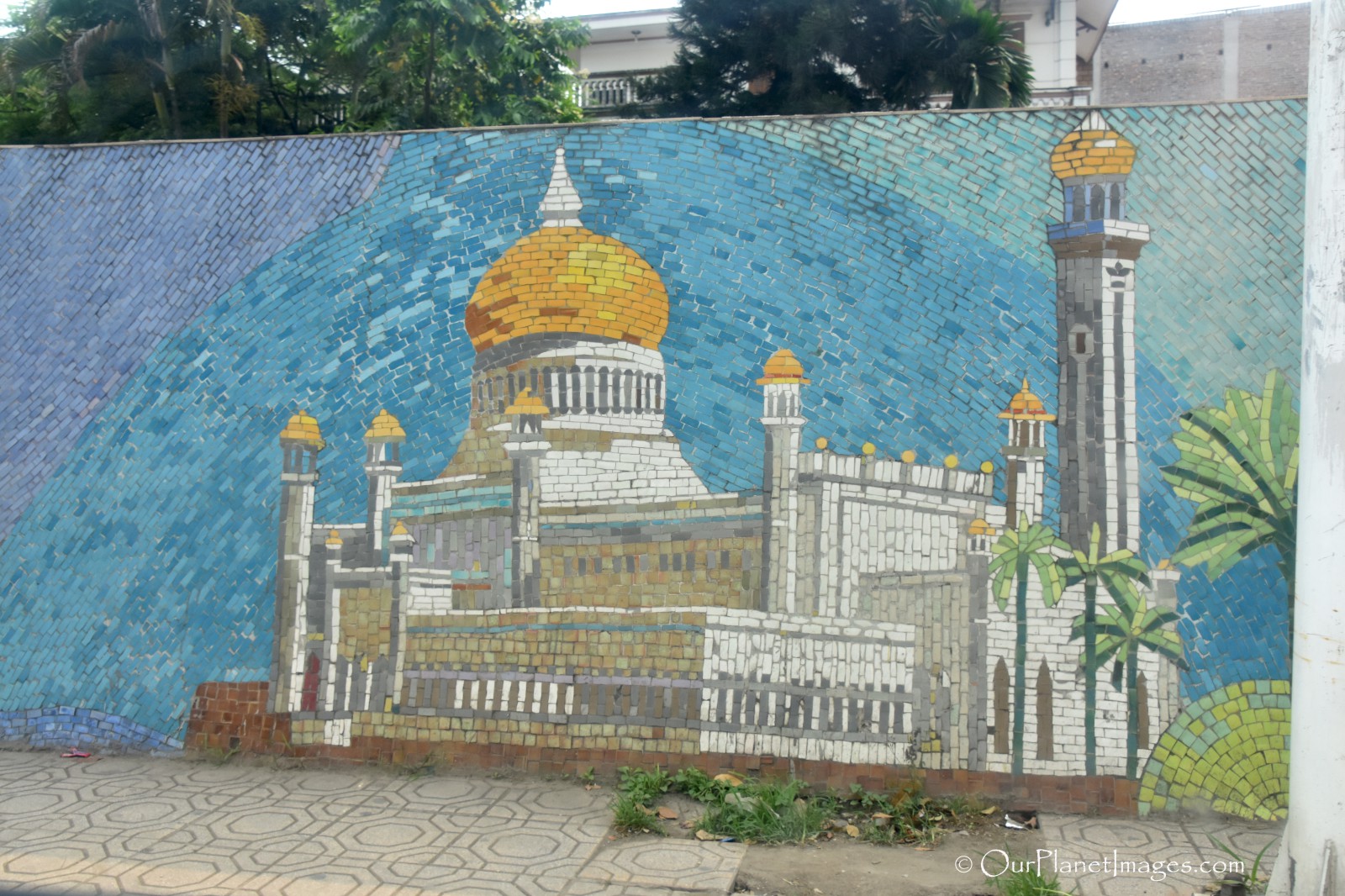
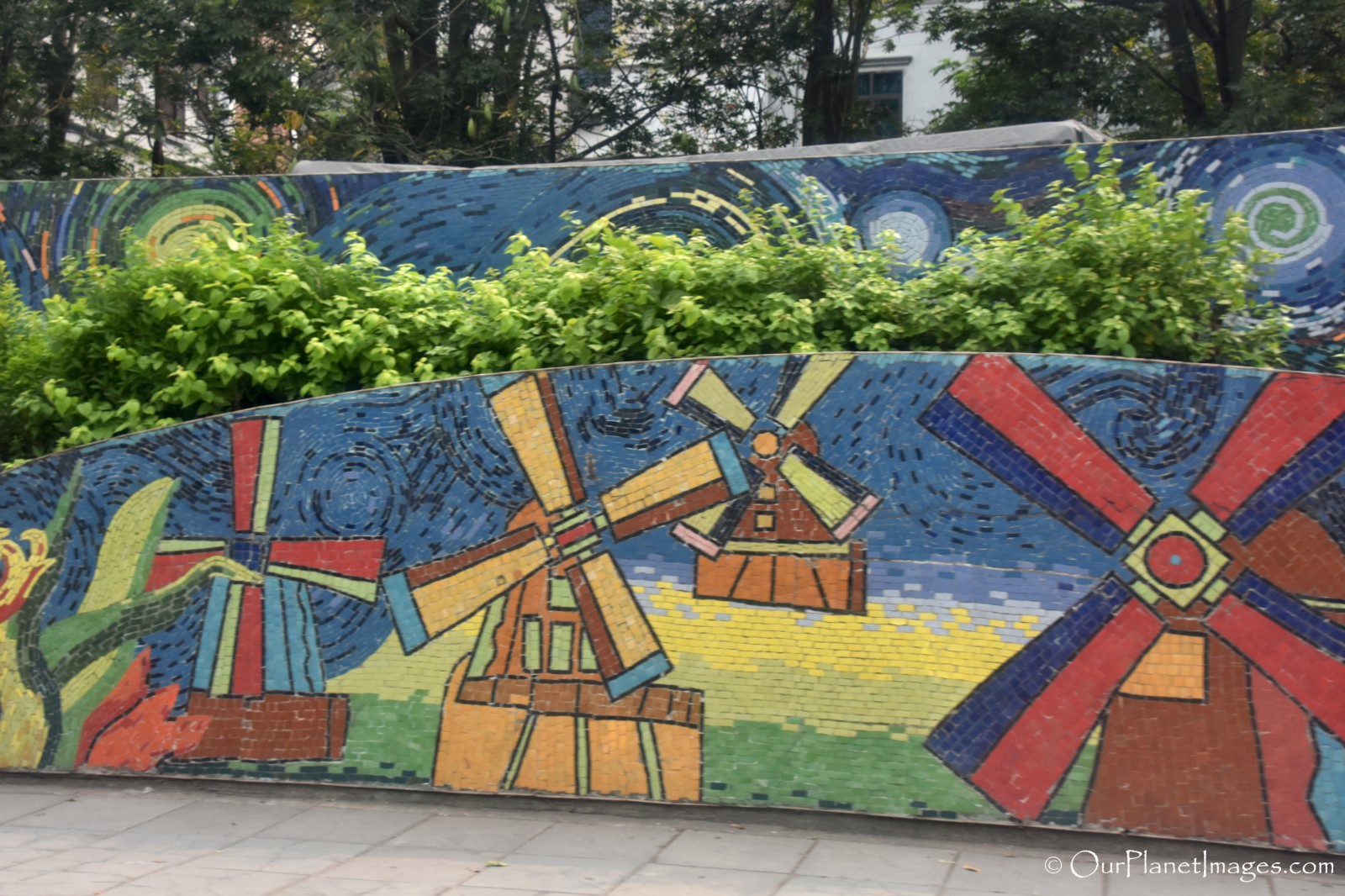
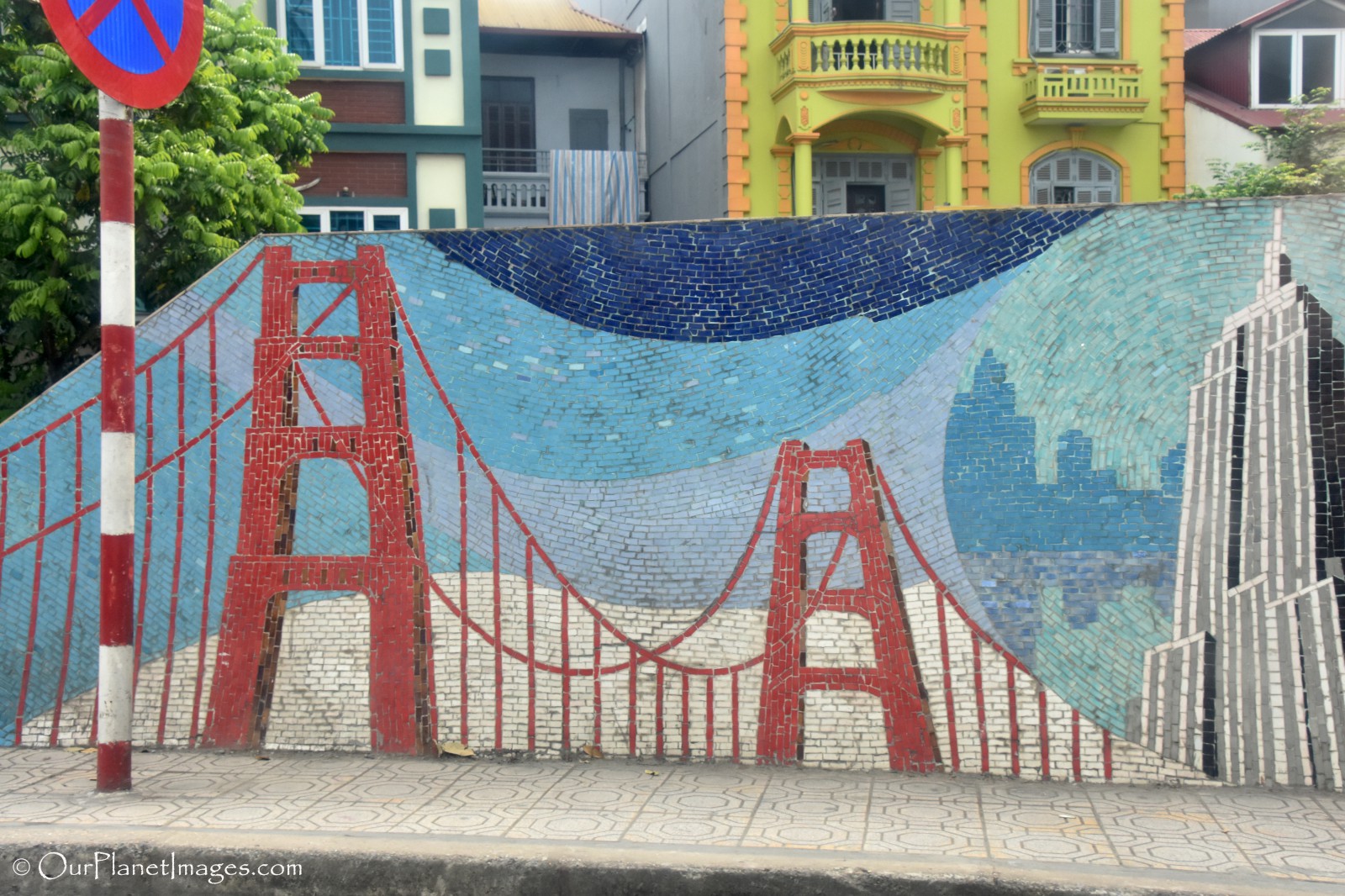
The Hanoi ceramic mosaic mural is a wonderful tribute to the history of Hanoi and it is a beautiful way to transition the plain looking Red River dyke into an attractive art wall alongside one of Hanoi’s busy streets.
The Dust on My Shoes
I really enjoy urban art and I particularly enjoy it when it has meaning. When I saw the Hanoi ceramic mosaic mural, I thought it was amazing because it incorporated the city’s history and culture into an attractive mural for the city to enjoy every day while they drive along the road.
In my travels, I have seen many stately monuments to historical events that are a memorial to a famous person or event. Many of those monuments were popular tourists sites with many tourists crowded around taking photos.
I liked the Hanoi ceramic mosaic mural because it is a modern take on a way to capture the city’s history and culture without building a repetitive monument like so many other cities. Plus it is so much more enjoyable to go along the street with anticipation of what the next mosaic scene will represent.
My travels have taught me so much about the history of the places that I have visited. Many times it has involve visiting historic sites but that same local history can be learned in modern presentations. Make sure to see the Hanoi ceramic mosaic mural when you visit Hanoi!
Related Posts

